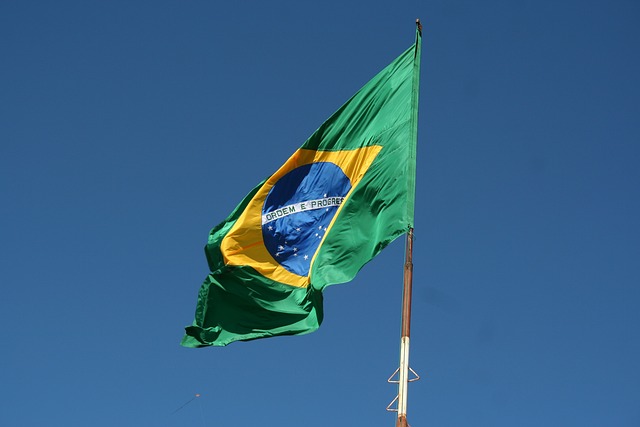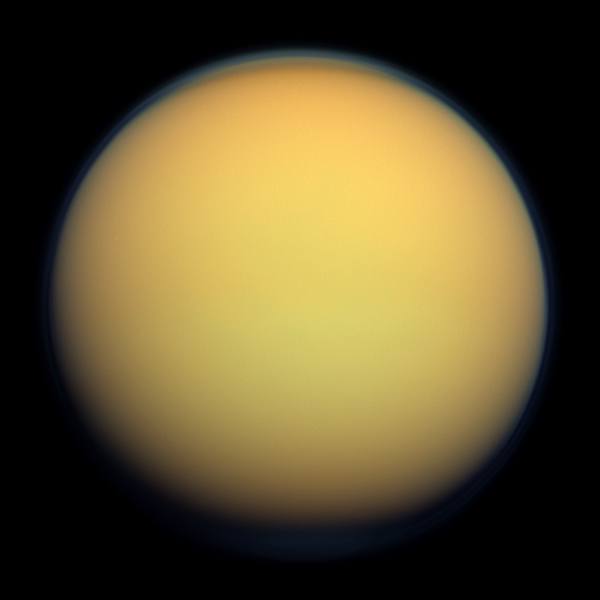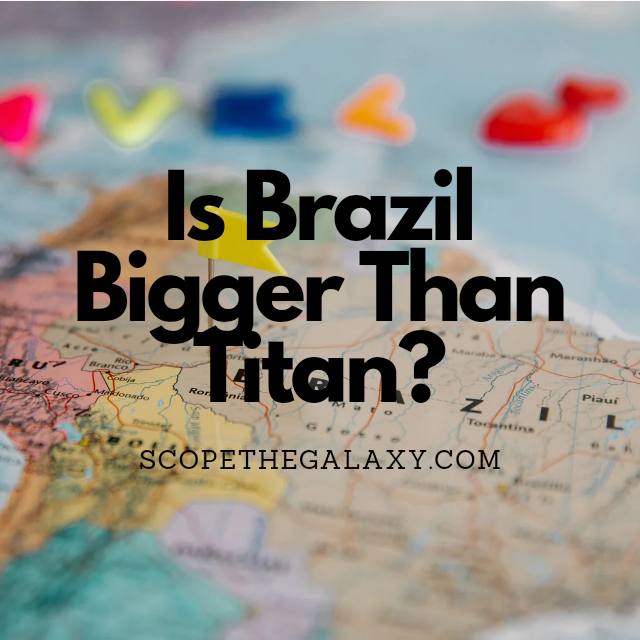*This post may contain affiliate links. This means we may make a commission if you purchase an item using one of our links*
Brazil has a surface area of 8.5 million sq. kilometers and a volume of 340 million cubic kilometers while Titan is a spherical entity with a surface area of 83 million sq. kilometers and a volume of 71.6 billion cubic kilometers. It only makes sense that this moon would be bigger as it is spherical whilst Brazil is a flat land mass.
For a more thorough breakdown of what makes each body as big as they are, continue reading as it will be covered in more detail below.
How Big Is Brazil?

Brazil, officially known as the Federative Republic of Brazil, is a country situated in South America. However, it makes up around half of the continent’s total landmass. It is the fifth largest country in the world, only beaten by the United States, Russia, Canada, and China.
Brazil stretches for roughly 4,350 kilometers from north to south and around 4,395 kilometers from east to west, giving its circumference a total landmass of around 8.5 million square kilometers. Within this landmass of Brazil, there are approximately 216 million people, which makes it the 6th most populated country in the world.
Brazil is so large that it covers 7,400 kilometers of the Atlantic coastline, sharing over 15,000 kilometers of inland borders with just about every South American country besides Ecuador and Chile. They border Uruguay to their South, Bolivia, Paraguay, and Argentina to their South West.
Peru lies to the West of Brazil, while Venezuela, Suriname, Guyana, and French Guiana lie to its immediate north. The total shape of Brazil forms an enormous irregular triangle that includes a huge amount of the Amazon rainforest, subtropical landscapes, savanna, wetlands, and mountainous regions.
If we are to assume that the average thickness of the land on Brazil is roughly 40km, this would lead to Brazil’s overall cubic volume reaching a relatively high number of 340 million cubic kilometers.
How Big Is Titan?

Titan is the largest of Saturn’s moons and the second largest satellite in our solar system (following Jupiter’s moon Ganymede). It is the only moon in the Milky Way that has clouds and a planet-like atmosphere.
Titan has a diameter of 5,150 km and a surface area of 83,000,000 sq. km. While its width falls short of Canada’s grand expanse, Titan’s surface area is far more vast thanks to its spherical body (compared to Brazil’s flatter land mass). This surface area gives Titan an impressive volume of 71,600,000,000 cubic km.
This moon is so fascinating to scientists that they will launch the $1 billion drone “Dragonfly” to explore its surface. Titan has a thick atmosphere; because of this, the moon experiences a methane cycle of evaporation and condensation that creates rain, clouds, seas, and rivers. Other than Earth, Titan is the only body in the Milky Way that shows clear evidence of stable bodies of surface liquids.
The moon’s surface is one of the most Earth-like places in the Milky Way, though there are some vast differences. Firstly, the temperature is far, far colder, with an average surface temperature of −179.5 °C. And Titan’s gravity is only 14% of the Earth’s gravity, which means that a person weighing 100 kg on Earth will only weigh 14 kg on Titan.
Dutch astronomer Christiaan Huygens first discovered the moon in 1655 and named it Saturni Luna (Latin for “Saturn’s moon). It was in 1847 that English astronomer John Herschel suggested that the moon be renamed Titan from Greek mythology.
Scientists aren’t entirely sure about Titan’s origins but get some clues from its atmosphere. Instruments measuring the isotopes discovered that the ratio of Titan’s nitrogen isotope most closely resembles comets from the Oort Cloud – billions of icy bodies which orbit the Sun from a distance of 5,000 to 100,000 astronomical units.
This nitrogen ratio suggests that the moon was created from the same disc of dust and gas that formed the Sun.
Titan orbits at a distance of roughly 1.2 million kilometers from Saturn, a planet that is approximately 1.4 billion kilometers from the Sun. This vast distance means that sunlight takes around 80 minutes to reach Titan (compared to around eight minutes on Earth), and the light is 100 times fainter on this moon than we experience on Earth.
Summary
Titan is the second largest moon while Brazil is the 5th largest country. As a result it wouldn’t make much sense for it to be bigger considering even Russia (the largest country on Earth) can’t hold a candle to Titan’s overall size.
In regards to surface area Titan is just under 10 times bigger and has a volume roughly 210 times that of Brazil, making it far and away the smaller entity of the two.

